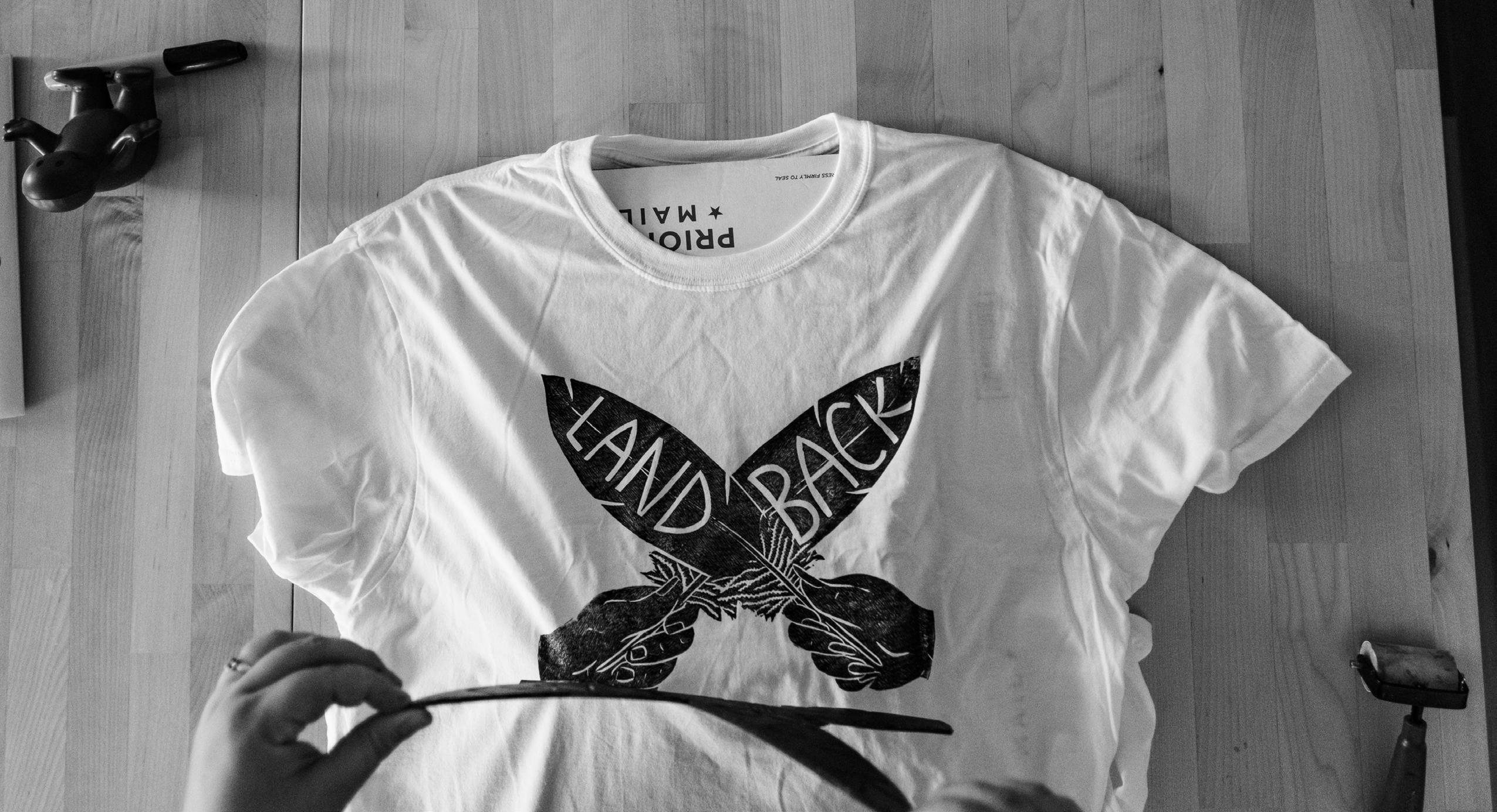
3 minute read
CONTEMPORARY CREATIONS OF CULTURE

A pair of Katrina’s beaded earrings, which feature beads, medicine wheel and metal McPherson lids (which are used for jingle cones). Photos by Katrina.
Advertisement


Blending contemporary with traditional, Katrina Brown Akootchook's beadwork and designs she creates are just as creative and cultural as the methods she uses to make them and are also rooted in activism.
Blending contemporary with traditional, Katrina Brown Akootchook's beadwork and designs she creates for her online shop are just as creative and cultural as the methods she uses to make them. What makes Katrina's design stands out from the rest is their freshness; she works almost entirely in analog mediums. Her shirts, denim jackets, totes, and lino prints are all hand block-printed (wooden blocks are used, and screen printing uses a stencil to shift the designs on desired fabric) and hand-sewn beaded jewelry. Katrina's designs are also rooted in activism as shes been involved in various Indigenous protection movements such as NoDAPL, MMIWG2S, and the Kia'i at Mauna Kea. For Katrina, her designs are a reflection of the more significant work being done.
What's your name? Where are you from?
My name is Katrina Brown Akootchook, and my spirit name is Yehuhyakta or Berry Picking Woman. I currently live in Hawai'i, but I've grown up all over the world, and my family is originally from southern Ontario, Canada. Answering the "where are you from" question always gives me a small existential crisis!
What's your tribe?
I'm a member of the Oneida Nation of the Thames Bear clan. I also have ties to the Chippewa of the Thames First Nation, turtle clan. I get my surname "Akootchook" from my Inupiaq husband, but I am not Inupiaq.
What do you consider yourself in the LGBTQ2S+ space? What are your preferred pronouns?
I am a Two-Spirit woman, and my pronouns are usually she/her though I am also comfortable with they/them.
What's your small jewelry business called? When did you first start it?
My little business is called "Sweetgrass and Sage". It's a blending of two of my favorite medicines. They represent how I feel about beading, that it brings in goodness and beauty to the world, and also helps push the chaos back a little too. I started beading under this name in 2015, and as my skills improved, the business just sprouted up gradually and organically. I think a lot of beaders don't intend to sell their work at first, but when others start to notice our work, they naturally want to buy or trade for it. I originally started selling it so that I could buy more and better beads!
Where do you find your inspiration for your designs?
Lately, a lot of my designs are rooted in activism. I've spent the last few years being very involved in Indigenous protection movements such as NoDAPL, MMIWG2S, and the Kia'i at Mauna Kea. Art has a massive place in these movements, that helps people unite, recognize other protectors, and focus our messages. A lot of my inspiration has come after listening and learning from the brilliant people who band together for these movements. I hope that my designs are a reflection of the more significant work being done, just made tangible. I keep a sketchbook of all my beadwork and block-printing inspiration, which I can jot down quickly when an idea strikes. Beadwork-wise, I listen to my materials. I've amassed quite a variety of beading supplies. When it's time to figure out a new project, I gather little piles of beads and create color stories first, then the design second.
What makes your designs stand out?
What makes my designs stand out is their freshness. I work hard to create something new but still recognizably Indigenous. Be that taking a traditional technique and applying it unexpectedly, or using traditional motifs to say something that's culturally relevant to a current movement, I think that blending activism with Indigenous design and aesthetic is always a winning combination. I also work almost entirely in analog mediums; there's always a distinct physicality to my pieces. For example, you know every image was hand block-printed and every bead hand-sewn. I think people respond to the little variations in my work that make it so entirely human.










